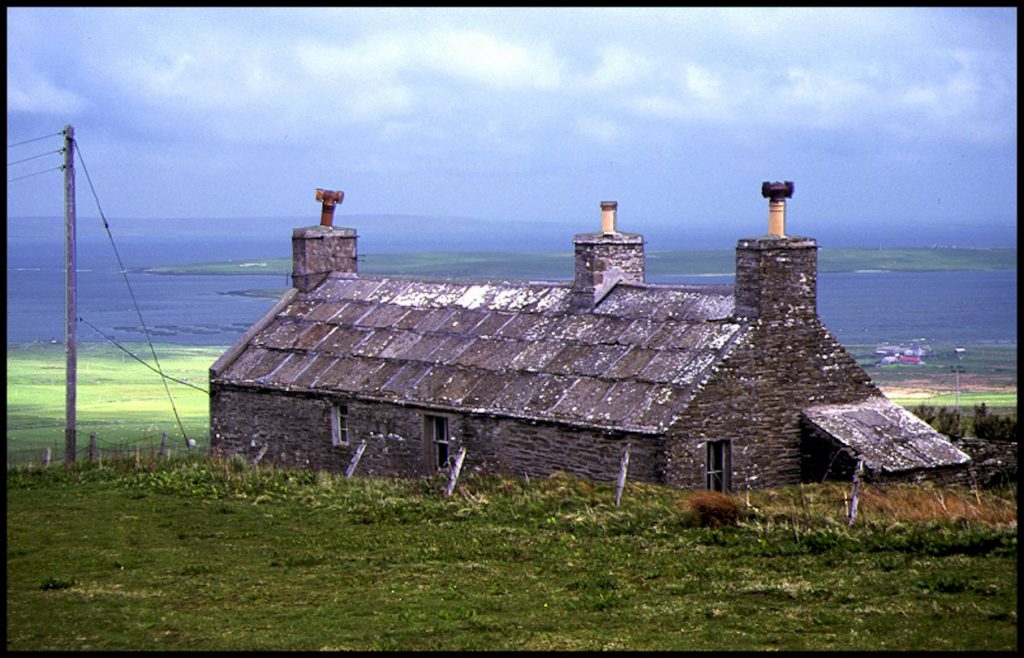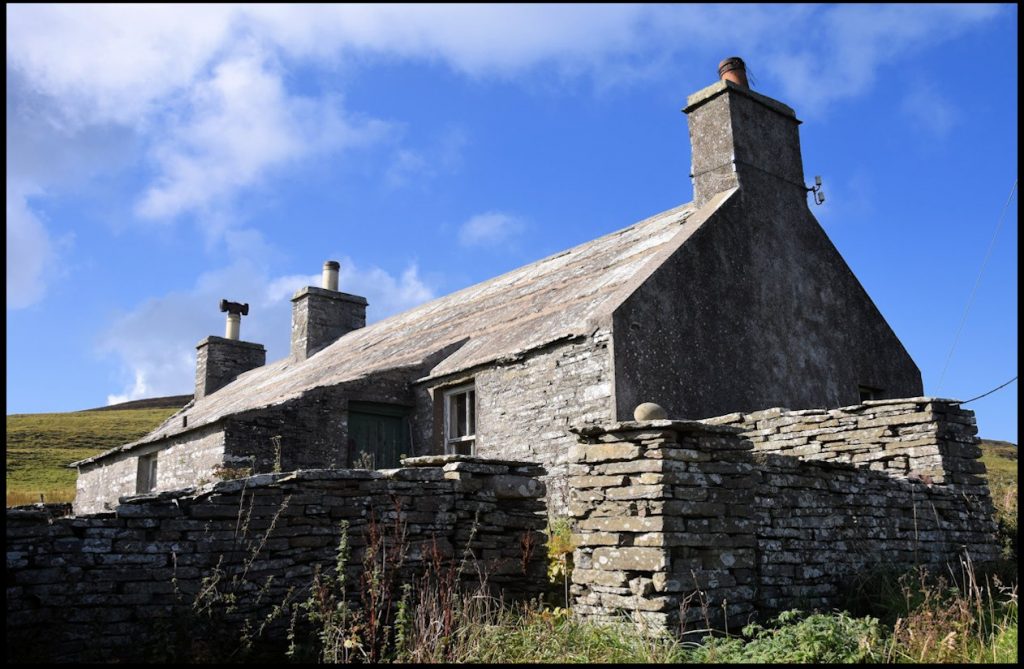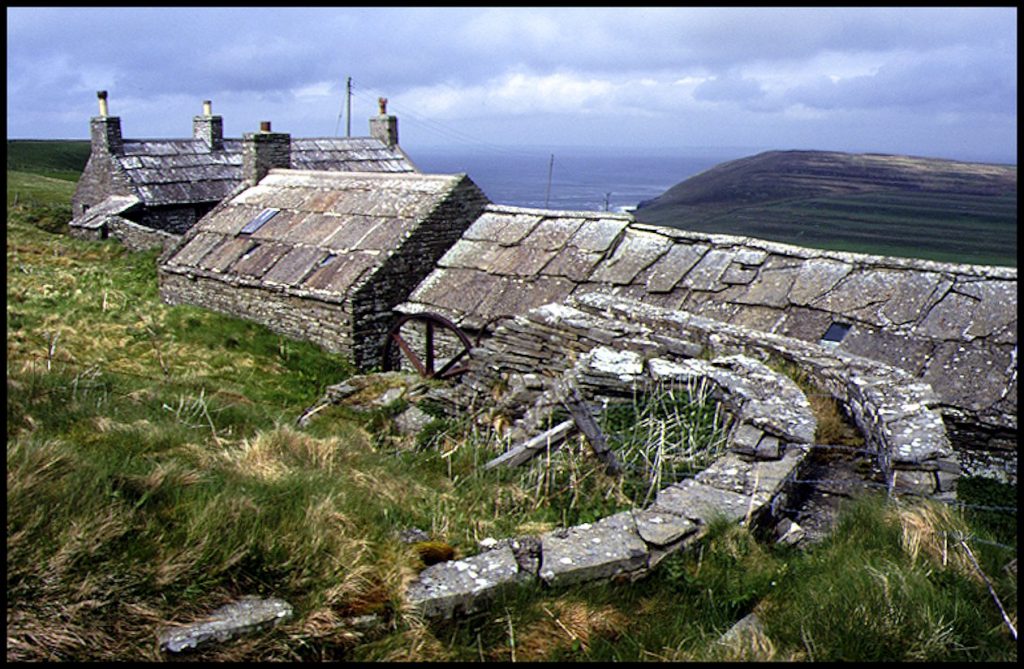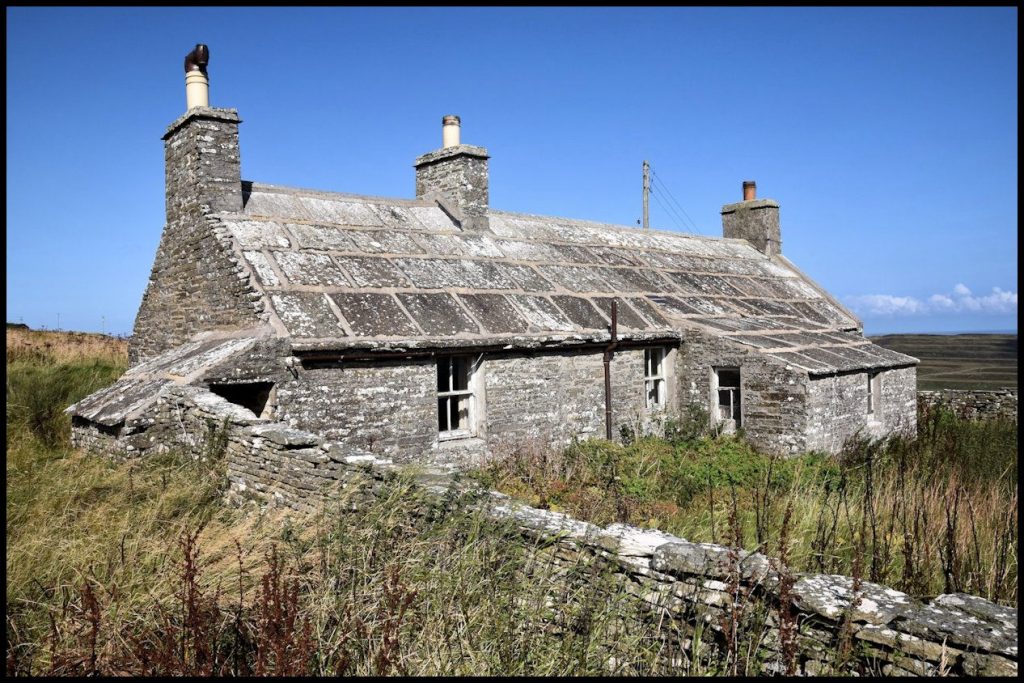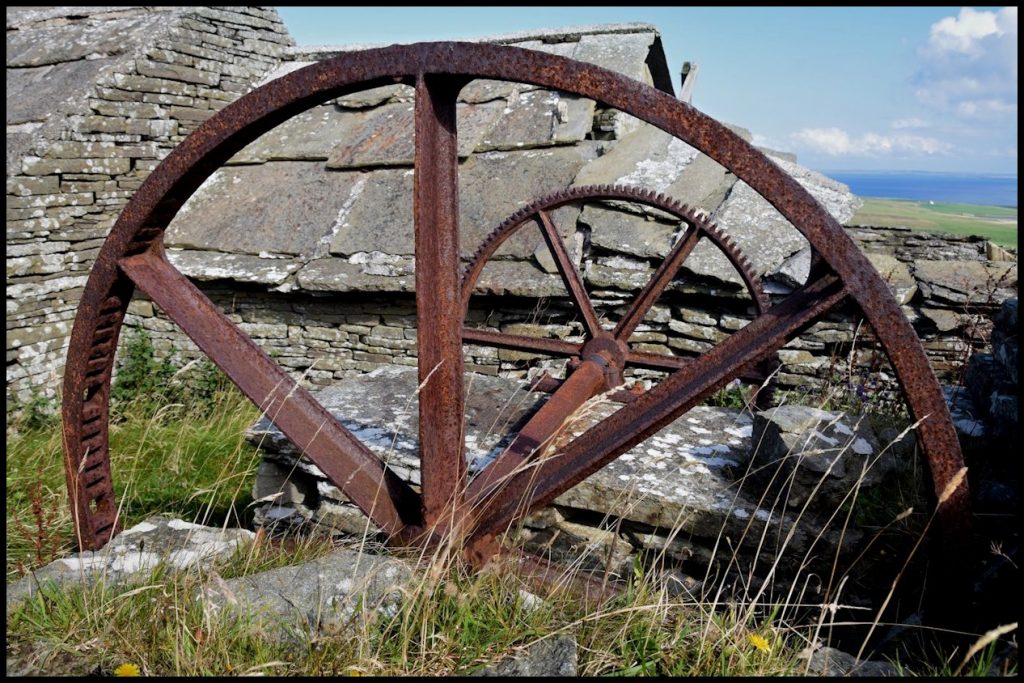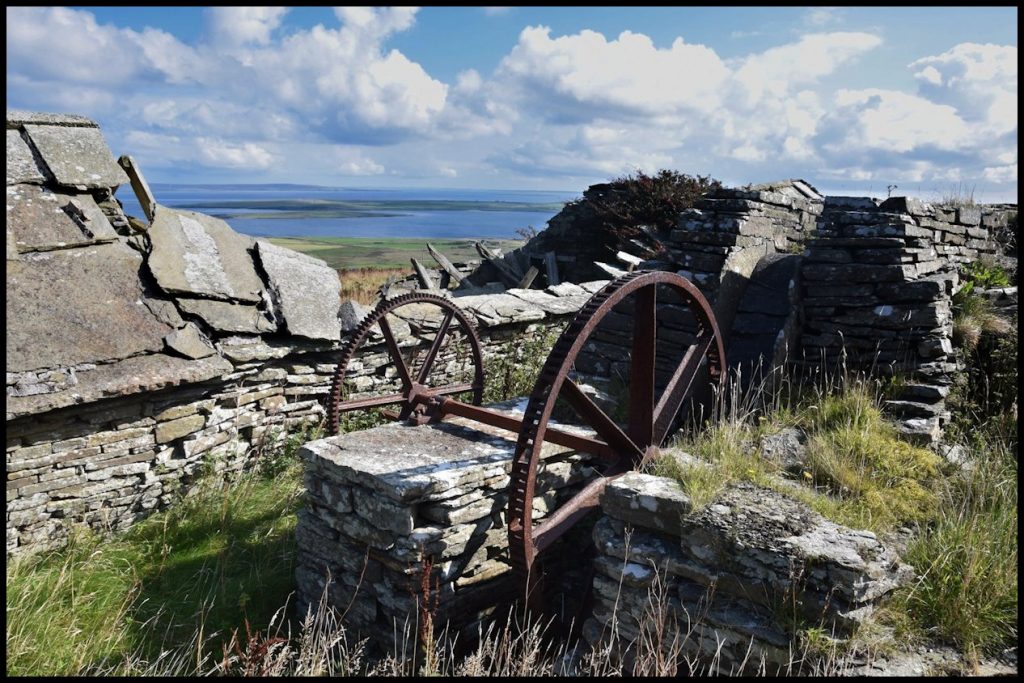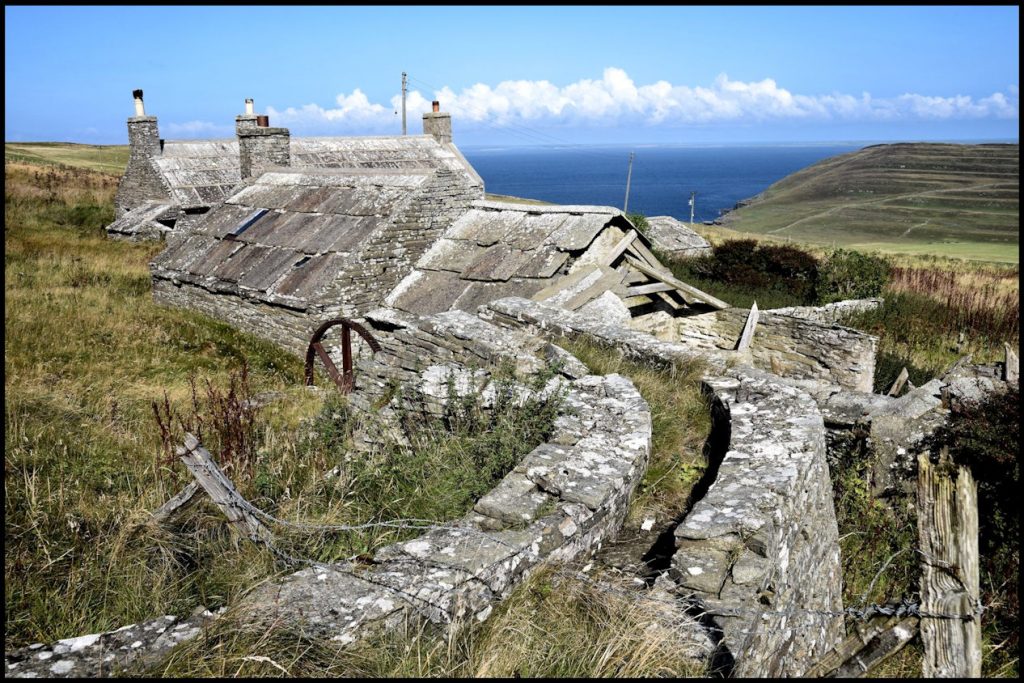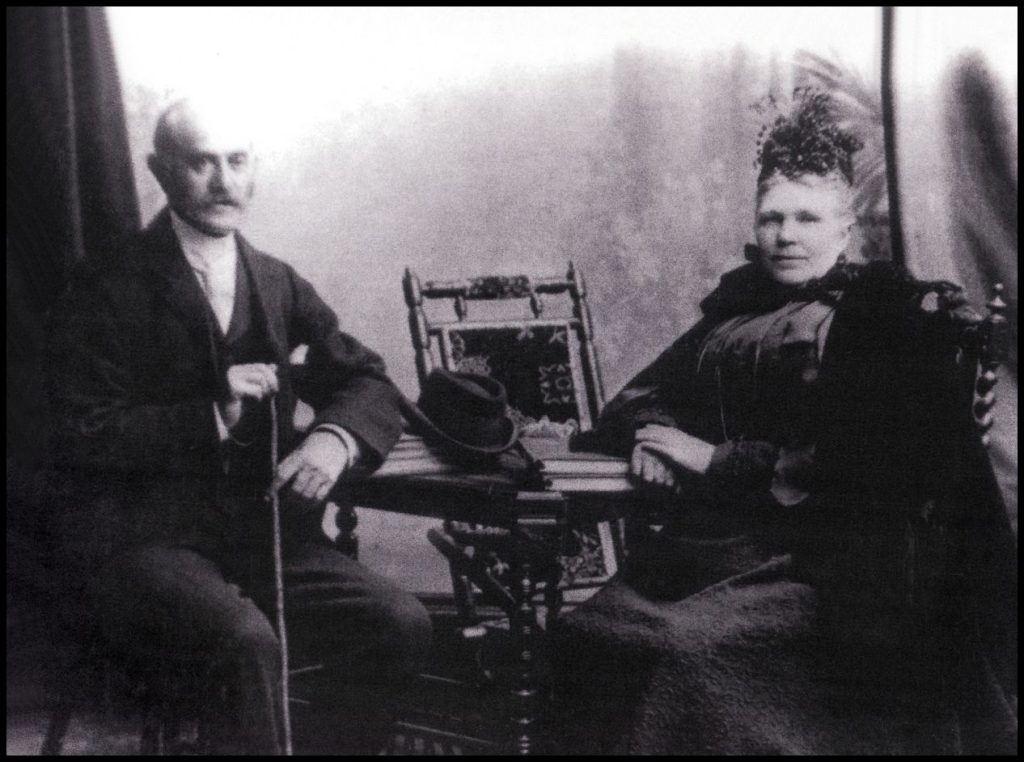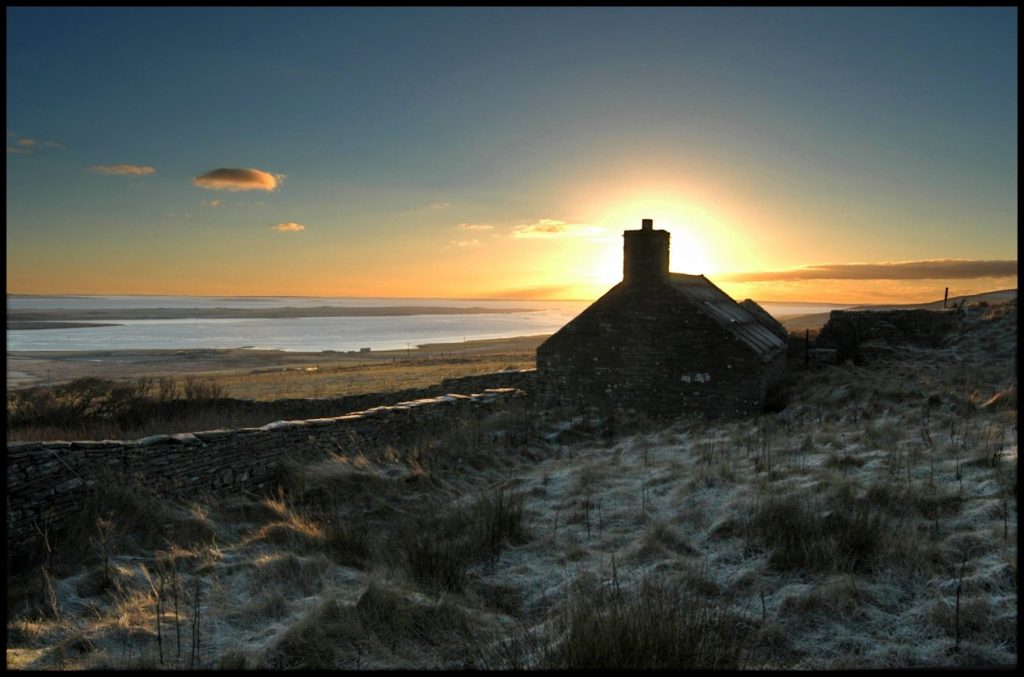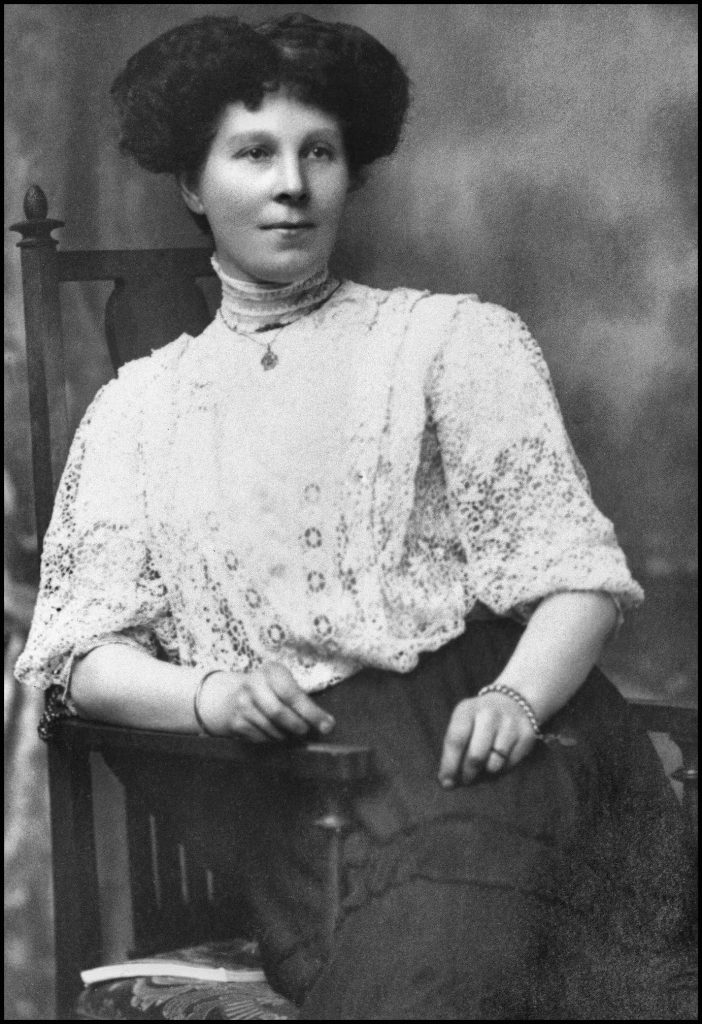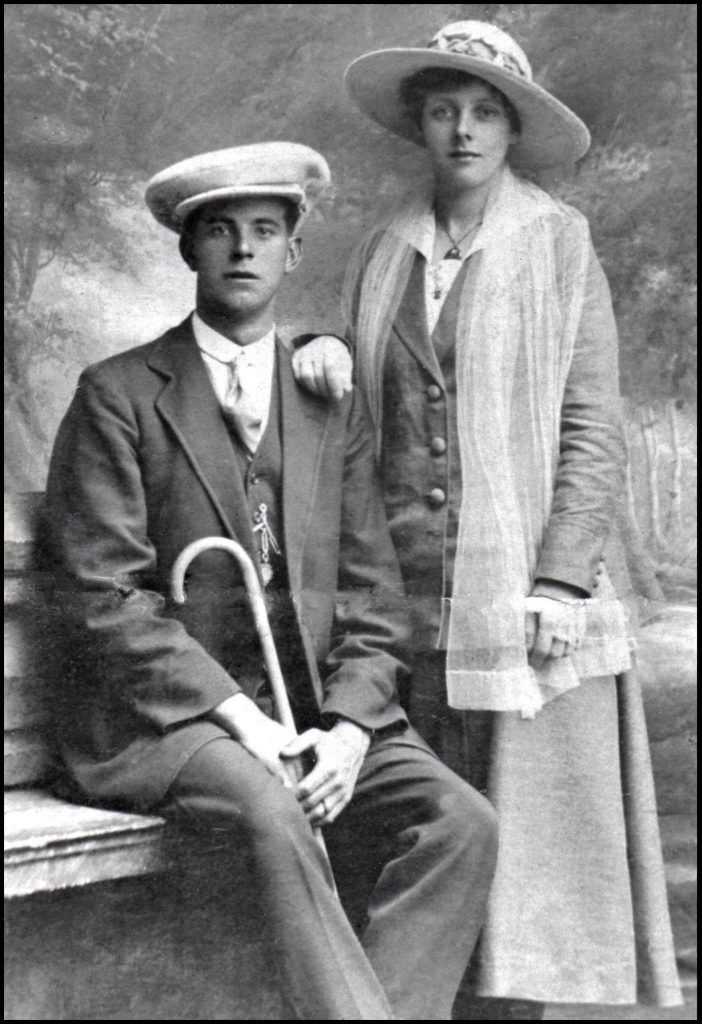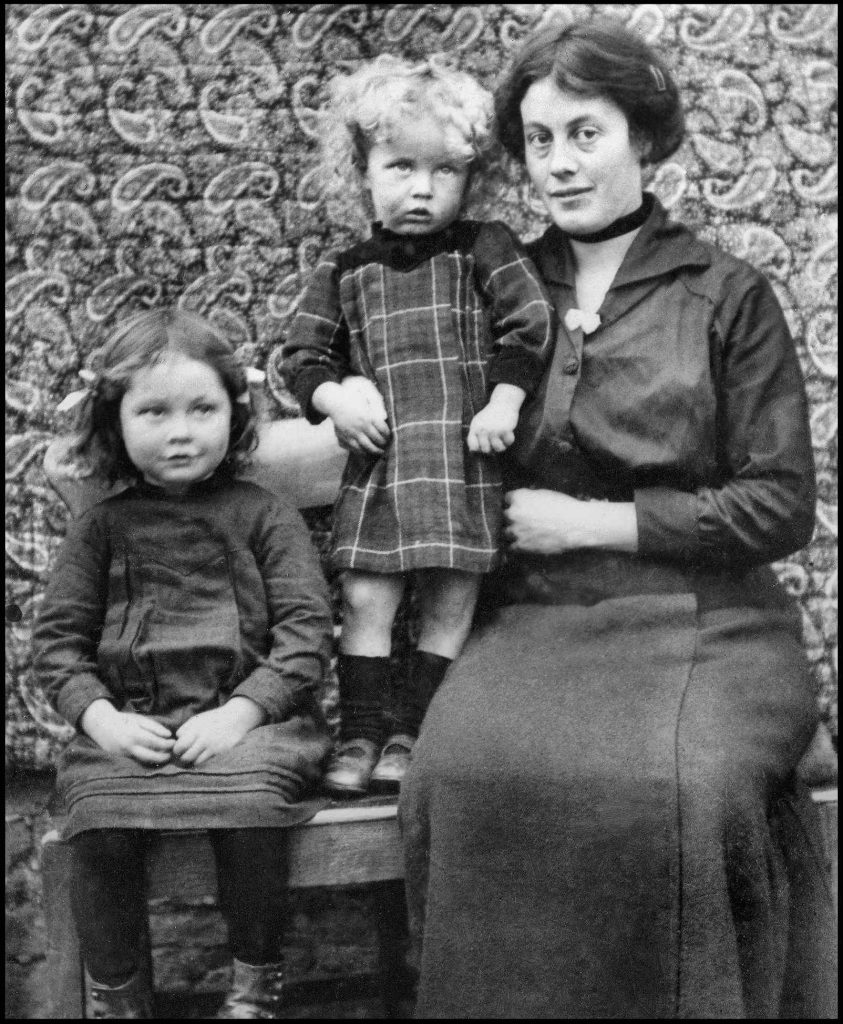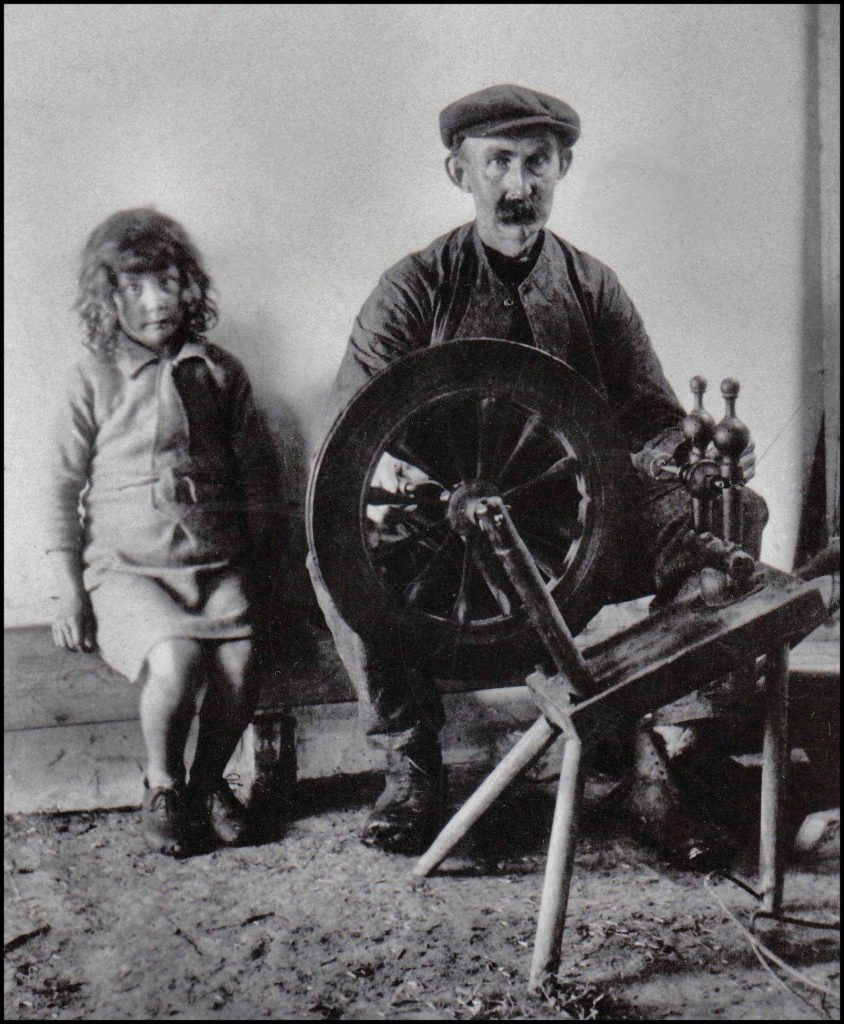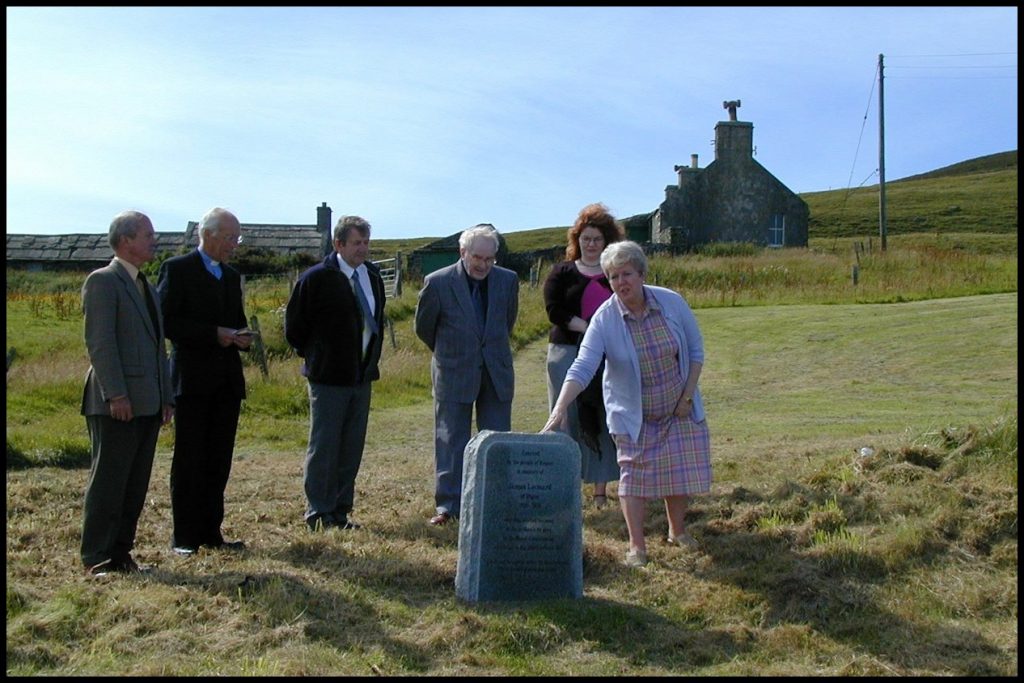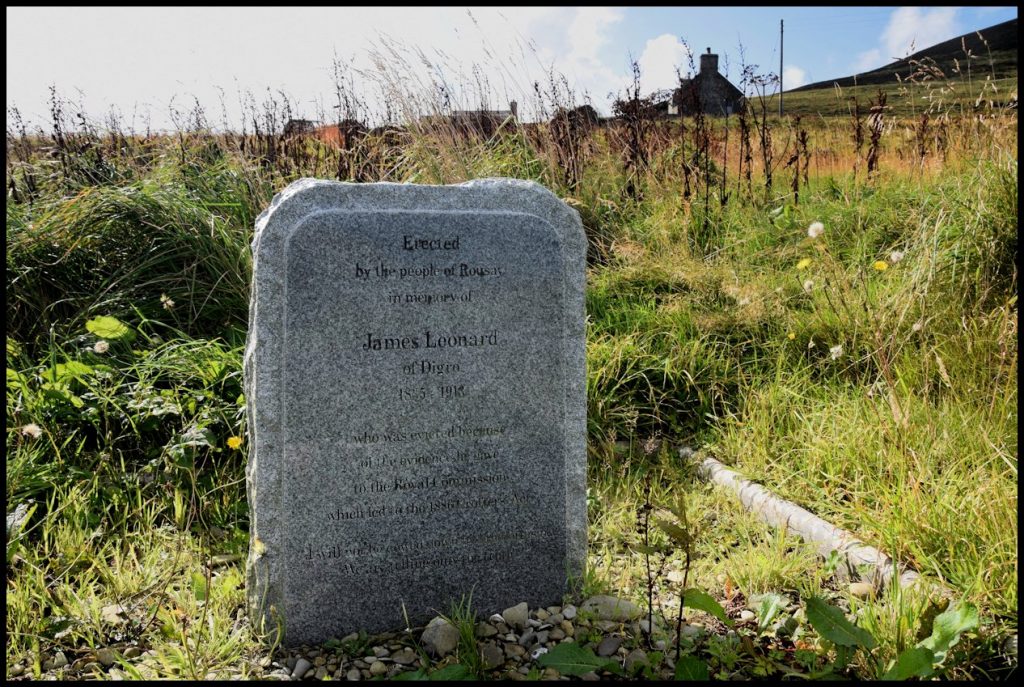Digro was a small croft on the east slope of Kierfea Hill, Rousay. Peter Leonard, a 40-year-old wool weaver, lived there in 1841. He was the son of Thomas Leonard and Isabella Inkster and was born in 1798. He married Isabella McKinlay, daughter of William McKinlay and Isabella Lero of Essaquoy, Sourin, and between 1820 and 1837 they had ten children, seven girls and three boys :-
They were; Ann, born on December 3rd 1820, Peter, on August 4th 1822, Cicilia on September 7th 1824, Mary, on October 7th 1826, Isabel, on August 3rd 1828, Margaret Smeaton, on November 9th 1830, Ann, on September 23rd 1833, James, on July 6th 1835, William Smeaton, on August 23rd 1837, and Helen, in March 1841. Cicilia died in January 1825 aged 3 months. Ann died in 1832 at the age of twelve, Margaret Smeaton died in 1845 at the age of fifteen, and William Smeaton died in 1847, when he was ten years of age.
Their mother Isabella died on January 3rd 1873 aged 77 years and father Peter died on December 18th 1882 at the age of 83. They were buried in the same grave as their four young children in Scockness kirkyard.
By now son James was head of the household at Digro. He was a stone-mason and was married to Hannah Reid, youngest daughter of George Reid and Janet Harcus, who was born on December 2nd 1840 at Pow, Westside. They had a family of fourteen children, nine sons and five daughters:
George Reid, born June 7th 1860, died August 11 1879;
John Reid, May 18th 1862, died April 4th 1906;
Hannah Catherine, born March 24th 1864, died February 28th 1936;
James, born November 16th 1866, died March 20th 1962;
Frederick Cunningham, born June 12th 1869, died October 25th 1939;
Isabella McKinlay, born August 4th 1871, died January 29th 1940;
Annie Gibson, born, born September 23rd 1872, died October 20th 1956;
Arthur William, born January 18th 1875, died August 22nd 1879;
William Irvine, born April 11th 1877, died August 23rd 1879;
Alfred, born May 2nd 1879, died August 4th 1933;
George Arthur William, born July 7th 1881, died January 9th 1954;
Edith Harriet Helen Stevenson, born October 7th 1883, died 1960;
Archibald McCallum, born February 17th 1886, died May 28th 1972;
Lydia Reid, born December 18th 1889, died December 31st 1972.
Three of the boys, Arthur, William, and the first George, died within a fortnight at Digro during a diphtheria epidemic in 1879.
As an accomplished singer James was in demand at concerts and soirees and served as precentor at the Free Kirk in Sourin. After the deaths of his children he ceased to take any pleasure in secular music and he became increasingly serious, even melancholy.
Digro lay on the very margin of cultivation, high up on Kierfea Hill, commanding a view over the whole wide sweep of Sourin. Four hundred feet above sea level in Orkney’s cool and windy climate is a considerable altitude. The land was poor and the soil shallow and stony, but the buildings at Digro were good and still stand to this day. The well-built walls and neat flagstone roofs are a testimony to James Leonard’s skills as a mason, as is a miniature water-mill standing behind the original house and supplied from a small dam farther up the hillside.
In 1883 a Royal Commission, with Lord Napier as chairman, was set up to look at the condition of crofting in the Highlands and Islands. When the commission sat at Kirkwall, James Leonard led the Rousay crofters in their evidence regarding the harsh regime imposed on them by their laird, General Burroughs. Napier sought an assurance from Burroughs that he would not take retaliatory action against those who had spoken out against him. Burroughs refused to give such an undertaking, being the only one of the Orkney lairds to act in that way. Shortly afterwards, James Leonard and his large family were evicted from Digro. Unable to find other accommodation in Rousay they left the island and eventually settled in Oban. There James set up business as a coal merchant, a trade in which he seemed to have prospered to the extent of being the owner of the first motor car in the town.
Tommy Gibson of Brinola is in possession of a letter written by James Leonard in September 1912, which he sent to his sister Isabella who was married to Robert Grieve of Outerdykes. James was 77 years of age when he posted the letter and his sister was in her 84th year when she received it. It shows that he had fond memories of his earlier life in Rousay. He died at Oban in 1913.
My Dear Sister,
It is a long time since I wrote you now but today it just came in my mind to write you a few lines by way of remembrance of long ago. Well, Bello, I have not been well this long time I am bad with Rheumatism in my legs and feet I am lame in one foot but still able to move about. I have had a lot of worry this year between one thing and another. You would have seen in the papers that our motor had an accident whereby a young man was killed. George was driving it but I am glad to say no blame was found against George. Again Alf was driving another day and he stupidly ran the motor in a ditch with three people. He broke my car but wonderful none of the people got hurt. So you see what risks I have had. Mother is like myself bad with Rheumatism but still able to move about. She would venture to Rousay yet if she was well but business is bad with us at present and she cannot go. We are both thinking of seeing you once more but who knows whither that will be so or not. There is One who knows and in His hands we leave the matter.
I sometimes wonder that you are keeping so well considering your age. I should like very much to have a cup of tea with you now and some chickens as I used to get. I may get that at least I am hoping so. George Reid is still with us. He went to Orkney on Saturday. Hannah does nearly all the housework now, but Ma is always about. She (Hannah) gets letters from James regularly. He was saying that he might come and see us this winter if all went well. Now Bello write me and tell me exactly how you are keeping. Can you go to Digro or Faldown yet? Is Willie still Precenting? Do you go to church and can you sing as well as ever? I can sing still if I was in Rousay I would step into my old place and lead you all as I used to do is not that wonderful. Give our love to all our friends Digro Faldown Broland and any one you meet with who still remembers us. Ma and all the boys bids me to send their love to Bello o’ Whitehall. Boys and girls and all like you. God bless us all. That is my prayer Bello and He will bless us. Goodnight just now.
Your loving brother
James Leonard
——————————–
After James and his family’s eviction, Digro was occupied by his sister Helen Leonard and her husband William Louttit. He was the son of William Louttit and Christina Cormack, Faraclett, and he was born on April 1st 1842. Helen was the daughter of Peter Leonard and Isabella McKinlay, and she was 18 years of age when she and William were married on January 6th 1859. They lived at Faraclett and raised a family of six children: Peter was born on April 3rd 1859; Mary, on November 10th 1860; Margaret, on April 27th 1863; Matilda Leask, on August 7th 1865; Helen, on July 1st 1870; and William, who was born on September 4th 1873. Peter was just seven years of age when he died on the evening of February 20th 1867, having suffered from croup for four days.
At the time of the 1891 census William and Helen were both 50 years of age. Living with them were their unmarried daughters Helen and Margaret. Margaret had a son by joiner’s apprentice Hugh Craigie, Turbitail, later Deithe. Christened Robert William Reid Craigie, he was born on the afternoon of February 8th 1886 at Grain, Wasbister. On May 17th 1892, Margaret married William Learmonth, son of William Learmonth, Westness farm, and Mary Sarle Gibson, Bucket, Wasbister, who was born on August 13th 1865. They had six children: George was born in 1893; William, in 1894; Mary Helen (Cissie), in1898; Robert Alexander (Bertie), in 1902; James Louttit, in 1905; and Leonard, who was born in 1908.
Later occupants of Digro were stonemason William Grieve and his family. Willie was the son of William Leonard Grieve, Whiteha’, and Christina Craigie, Fa’doon, and he was born in 1887. In 1914 he married Ann Leonard Corsie, daughter of John Corsie, Brendale, and Margaret Jane Skethaway, Knarston, and she was born in 1893. Willie and Ann raised a family of five children: Ann Elizabeth was born in 1914; William, in 1915; John David, in 1923; Thomas Archibald, in 1927; and Margaret Christine, who was born in 1929.
Prompted by an idea of Robert Craigie Marwick an inscribed stone was erected on the roadside at Digro in memory of the ‘champion of the Rousay crofters’. On August 18th 2001 the stone was unveiled by two of James Leonard’s great-grand-daughters; Christine and Rosemary. Also in the picture below are the then Councillor Robert Cormack, Parish Minister the Rev Graham Brown, the late Jim Marwick, chairman of the community council, and Robert Craigie Marwick.
The inscription reads as follows:
Erected
by the people of Rousay
in memory of
James Leonard
of Digro
1835-1913
who was evicted because
of the evidence he gave
to the Royal Commission
which led to the 1886 Crofters Act.
“I will not be cowed down by landlordism…
We are telling only the truth.”
————————-
[All black and white photos are courtesy of the Tommy Gibson Collection]
